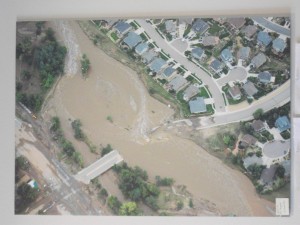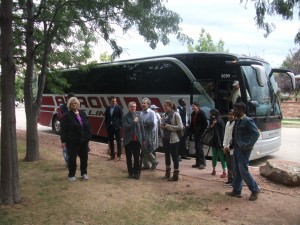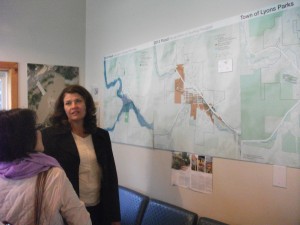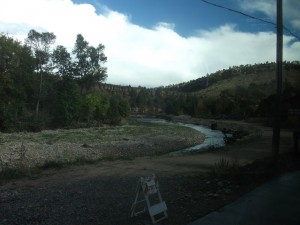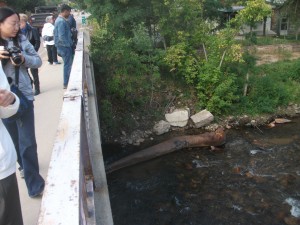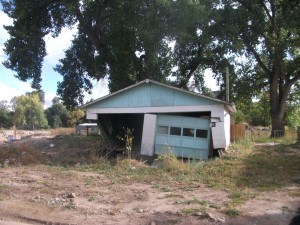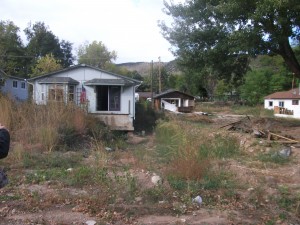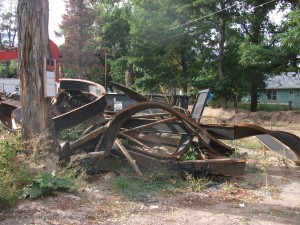It is easy enough to be cynical about government, especially about its response in a crisis. Millions of Americans express such cynicism on a regular basis, if not daily. It takes a bit more fortitude to look honestly at some of the daunting challenges government must face in events like Hurricane Sandy and to conclude that some things actually get done well, and to conclude that leadership is sometimes successful. It takes a certain depth of judgment to conclude that some of that successful leadership can emerge from moments of governmental self-criticism, examining in some depth what works well and what does not, then drawing conclusions about what steps would solve the problems uncovered.
I have just spent the last two weeks pouring over the entire 200-page length of the Hurricane Sandy Rebuilding Strategy, produced by the Hurricane Sandy Rebuilding Task Force since last winter and released on August 19. I would like to have blogged on this topic earlier, but I prefer on this site to be a bit more thorough in my reviews and not simply rush to judgment. I did use some material from the report in an August 20 presentation to the Chicago Metro Section of the American Planning Association, and have been seeking to wrap up work on the initial draft of our planned Planning Advisory Service Report on post-disaster recovery planning. But I wanted to be deliberate in reading the full report with its numerous recommendations, and I had plenty of distractions in the days following its release.
That said, on the Recovery News blog on the APA site, we did at least move to post quickly the link to the document without an extensive review. We thought it import ant to alert those readers to the document’s existence and provide easy access to a download. But here I want to comment a bit more on the underlying approach.
What impresses me most about the Rebuilding Strategy is the attempt to confront honestly the many dilemmas government faces in expediting recovery in the face of such a massive event. Although not at the level of Hurricane Katrina, the numbers are still staggering:
- 200,000 small business closures due to damage or power outage
- 72 direct fatalities caused by the storm, and 87 others indirectly connected to the storm
- $1 billion in gas line repairs in New Jersey
- Eight flooded tunnels, with average commute time doubled
- Six hospitals closed by the storm
- 650,000 homes damaged or destroyed
The litany of statistics could go on, but they are primarily associated with the fact that Sandy was the most urban-oriented natural disaster in a long time, perhaps ever, striking one of the most densely populated areas of the United States—New York and New Jersey. That, in turn, posed unique problems not always associated with hurricanes and floods, namely, that there was far less available land to which people in affected areas could be relocated because most of it was already highly developed. Amid all this, the Federal Emergency Management Agency was sending its new National Disaster Recovery Framework to the region on its maiden voyage, where it could work out all the kinks in a marvelous but still somewhat vague design for managing federal recovery assistance in a region containing one huge city, New York, with more planning and administrative resources than any other municipality in the nation, and a host of small townships and villages across Long Island and the New Jersey coast, many of which have only the most limited governmental capacity and require significant help from the state and federal government to begin to sort things out. This is not a recovery management challenge for the faint of heart.
The task force was the creation of President Obama, who appointed U.S. Department of Housing and Urban Development Secretary Shaun Donovan as its chair, with a long list of other federal agencies involved. Part of its task was not only to oversee the entire redevelopment process among the many agencies involved, notably including FEMA, but to develop from the experience recommendations for improvements in future federal efforts of this type. That is the focus of my essay here because that is the focus of the report.
There are numerous recommendations, but I find very few with which I would take serious issue. The task force seems, in my view, to have undertaken a very common sense assessment of the most significant issues connected with recovery, and made sober, sensible recommendations in the vast majority of cases. The first group, which may cause heartburn among climate change deniers but undeniably looks to the future with a keen eye, concerns the need to incorporate sea level rise into future risk assessments. This is a necessity, and the report calls for the development and use of appropriate tools to make such assessments, including NOAA’s rollout earlier this year of a new sea level rise tool. It seems foolhardy to continue to build along vulnerable coastlines in ways that fail to anticipate higher storm surge associated with such climate change impacts. Fiscal conservatism would seem to suggest a more cautious approach, even in the face of the never-ending desire to build on the beach. Yes, I know, such development can be immediately lucrative for some local tax coffers and the associated developers, but there must at some point be some public interest asserted for not imposing upon taxpayers the obligation to bail out such development when the next superstorm threatens. It is important that we rebuild our coastal communities in a more resilient fashion. The report includes, as a matter of fact, some additional recommendations for establishing national infrastructure resilience guidelines. The Sandy supplemental expenditure authorized by Congress totaled more than $60 billion. It is important that we spend such vast sums of money wisely when we rebuild.
It is not possible here to detail all the recommendations made. It is the intent to facilitate connecting readers to the report itself for such detail. But I do want to state that the report covers far more than I have just suggested, including measures for effective and timely data sharing between the states and federal agencies, opportunities for enhancing green infrastructure as part of the recovery, green building standards, and a host of good management suggestions for rebuilding affordable housing and assisting in small business recovery, among other subjects treated at some length. It is not necessary for everyone to read the report in the same depth that I did, but I suggest at least glancing through it to get some knowledgeable impression of its breadth and depth and logic. There are a few things here and there that puzzle me, including a definition of hazard mitigation that seems considerably more limited than the one in use by FEMA. I have asked for an explanation of that but not heard back yet. But by and large, I do think it demonstrates that such a task force can take an honest measure of such a large crisis and actually produce ideas that fit the challenge and may very well move the nation forward in its ability to handle such crises in the future. That is no small achievement.
Jim Schwab
